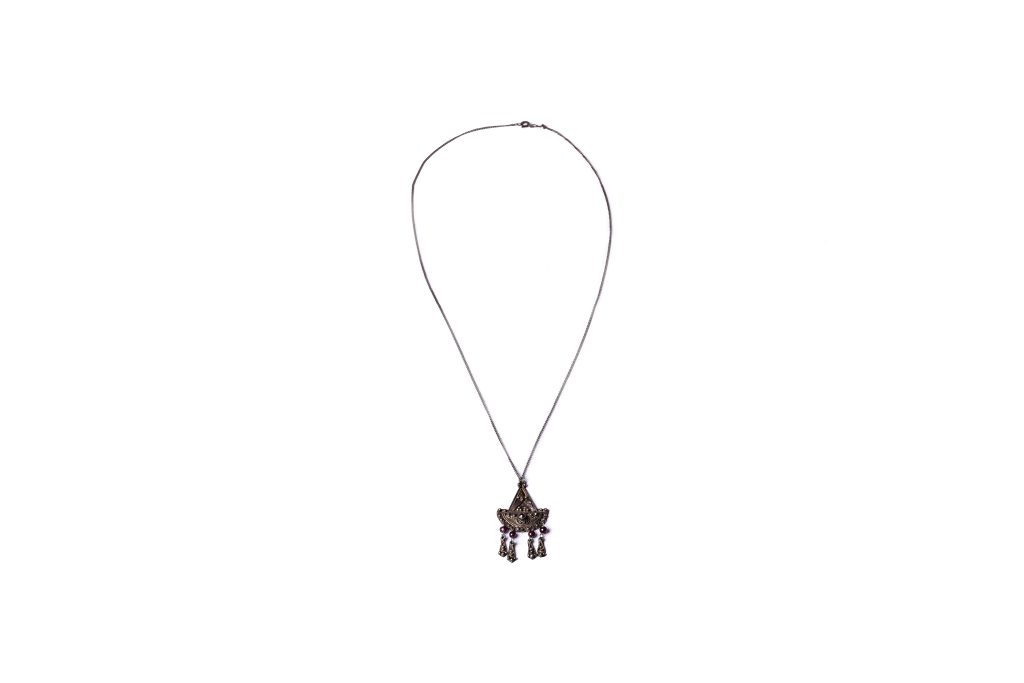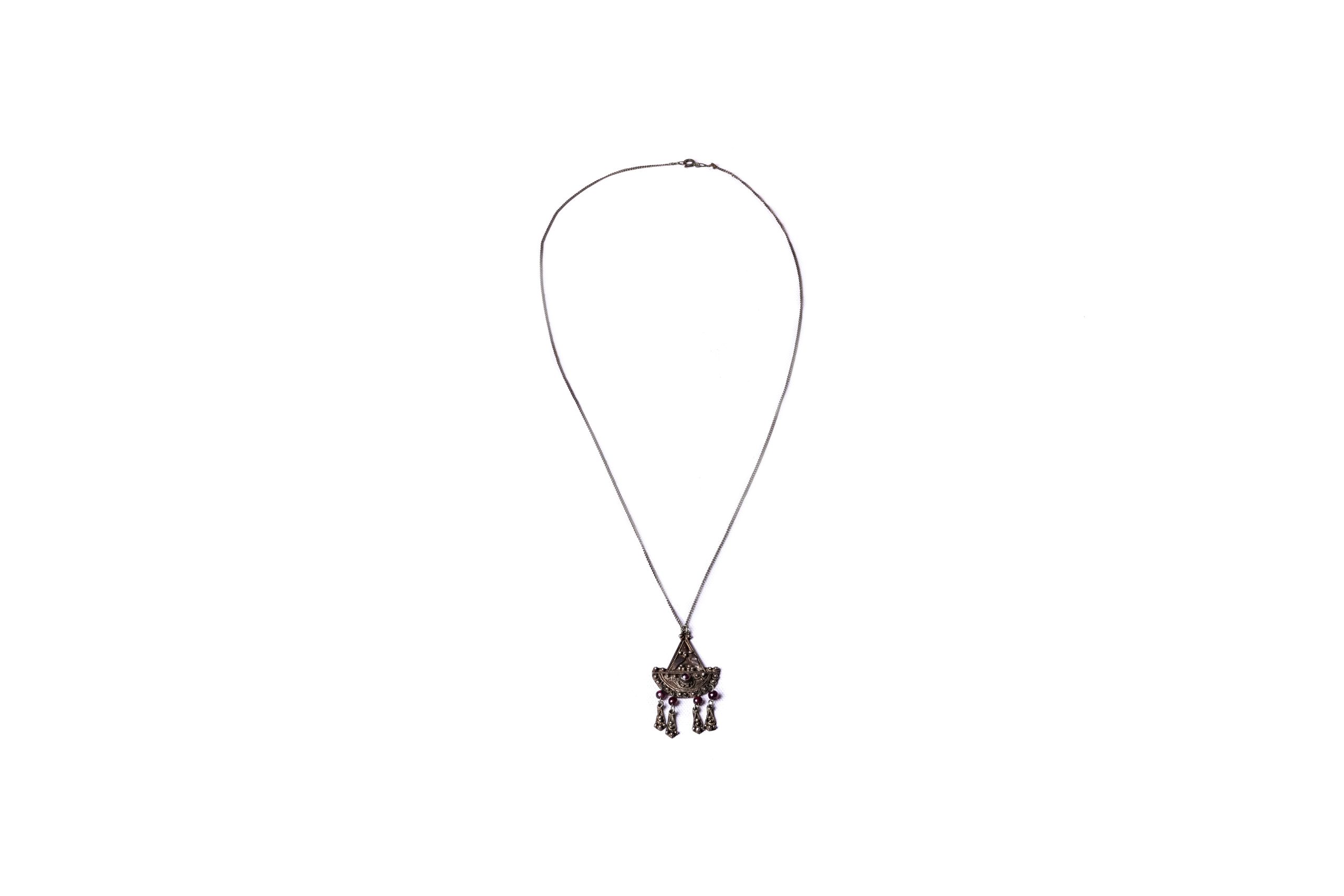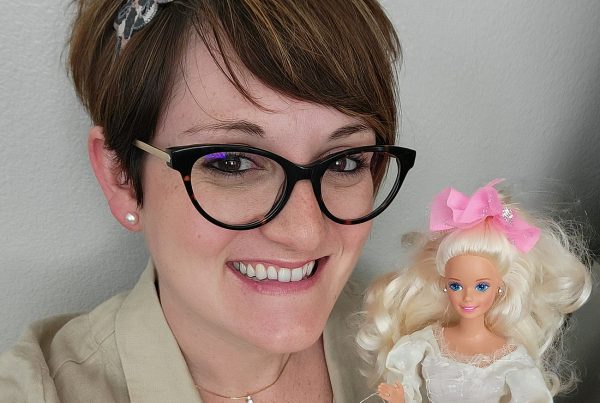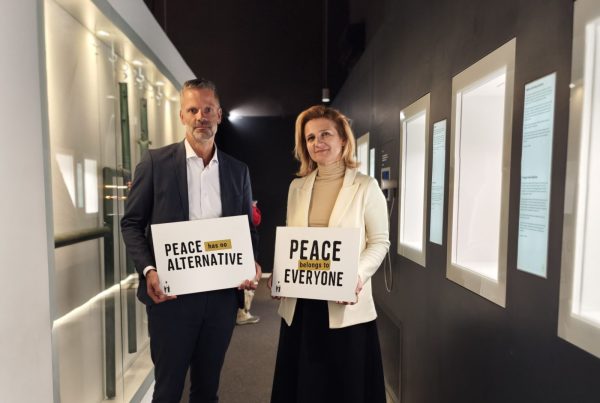The War Childhood Museum’s collection is built on the voices and experiences of those who have shared their stories and objects. Through a series of interviews with collection contributors, we explore what the museum means to them and what inspired them to donate an object to the WCM.
Larisa Šabanović, one of the contributors, decided to donate a necklace that symbolizes a special childhood friendship disrupted by war. In the interview, she talks about the necklace, her long-lasting friendship with Dušica, and the meaning this keepsake carries after their reunion 26 years later.
The Necklace of Friendship

When we were saying our goodbyes, I took off this necklace that I bought in Old Town Baščaršija and gave it to her for safekeeping, until she returns home and we meet again.
Dušica would not return home, and many years would pass before we saw each other again in Belgrade in 2018. Although it had been 26 years, I recognized her by the way she walked.
Dušica had kept my necklace and returned it to me on occasion, just like she promised.
Now, the necklace doesn’t belong to either Dušica or me. It is a symbol of our friendship, and that is why I entrust it to the Museum.
Larisa, 1977, Bosnia-Herzegovina
Why did you decide to donate the necklace to the War Childhood Museum, and what message do you hope visitors will take away from your story?
The idea to donate the necklace to the Museum actually came from my sister. I got the necklace as a gift from my late father — I really wanted it, and it was the most valuable material thing I owned. For me, the necklace represents a story about life, the good and bad that comes with it, friendship, hopes, and the innocence and honesty of childhood. After probably 30 years of its existence, it no longer belongs to anyone; it is a story in itself.
The necklace tells visitors that a museum can also be a home… a home for a story, and that none of us knows what life has in store, but it can always surprise us in a positive way; that we should not give up or lose hope. What belongs to us — our necklace, friendships, memories, and childhood — remains forever within us, and no one can take that away. Everything eventually comes to an end, no matter how hopeless it may seem, and despite all the negativity and human cruelty, there are good things that no one can, nor should, erase.
How do you think your and Dušica’s story can help children who are experiencing war and conflict today, and what are your hopes for their future?
I hope, or rather wish, that children would never have to go through war and conflict, but unfortunately, they do and will continue to. The only blessing in all of it is that perhaps, with their children’s hearts and spirits, they might be able to overcome these traumas and still have faith in life. Despite everything, there is love, kindness, and friendship, even if only in some form in their lives.
What do the War Childhood Museum and similar initiatives mean to you?
The Museum has enriched my life and reminded me that I was once a child too. Until I saw the documentary on Al Jazeera, I wasn’t even aware that I was a war child. When the Museum displayed the necklace, I felt relief and a sense of release because I shared my story with others. I truly believe that what really belongs to us is what we give of ourselves. I wanted Dušica to have an address somewhere in Bosnia and Herzegovina, some sort of a house or a home.
War and trauma need to be remembered, talked about, and experiences shared, because what often remains are just numbers and places, facts and recorded data, while those people are living beings with their own life stories. The Museum does an excellent job of this, as it preserves personal, ordinary, childhood, human interest stories that can touch the soul. War and conflict are widespread, and it’s easy to overlook or sometimes even forget the fact that there are people — individuals — living through these events. For me, the story of war often becomes “once upon a time in some land,” but only those who lived through it know it’s so much more than that. The Museum highlights that forgotten aspect.
The Museum has both a diagnostic and therapeutic role, and I thank you for that.
This interview was edited and condensed for clarity.





